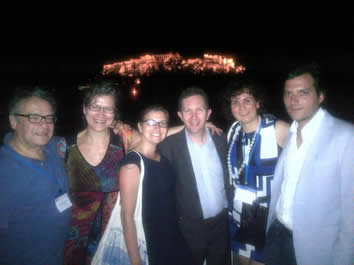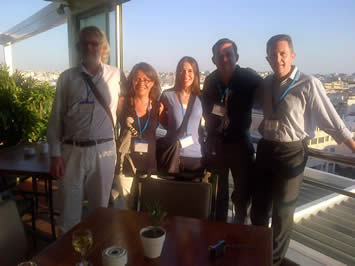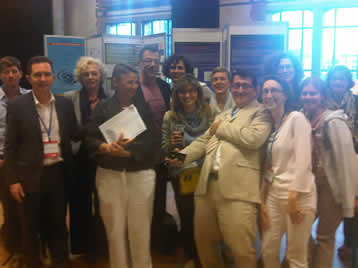Neuropsychoanalysis
The term 'neuropsychoanalysis' was first used in the late 1990s - by Mark Solms - as the title of the journal Neuropsychoanalysis. The journal was founded with the aim of reconciling psychoanalytic and neuroscientific perspectives on the mind -based on the assumption that these two historically divided disciplines are ultimately pursuing the same task: understanding the nature of the mental apparatus (or mind-brain, or whichever term one might choose to use). I have been co-Editor of the journal since 2002, and have especially worked to increase the empirical aspects of our work - broadly defined as experimental findings or case reports (as opposed to theoretical/speculative papers.

The International Neuropsychoanalysis Society was founded in 2000, at a remarkable congress held in London. The Society seeks to bring together those who have a shared intrest in neuroscience and psychoanalysis: a diverse group of scientists and clinicians, psychotherapists, clinical psychologists, neuropsychologists, psychiatrists, neurologists and the like. The Society is jontly led by Mark Solms and Jaak Panksepp. I have been Secretary of the Society since its foundation.
The Society hosts an International Congress annually, typically in wonderful locations, across Europe, North and South America. Since 2002 I have (together with Maggie Zellner) attempted to increase the place of empirical findings at our meetings, especially those presented by early-career researchers. Through an series of annual Open Research Sessions we have been able to increase the research presentations (both oral and poster) from 10 (Stockholm, in 2002) to almost 90 (Berlin, in 2011). Below are a few images from various years of the Congress - which might perhaps tempt even more of us to come along to these remarkable events?



Overviews and commentaries on neuropsychoanalysis.
Those seeking an overview of neuropsychoanalysis might wish to look at my paper with Mark Solms in Cortex (with a set of associated commentaries). The paper generated a range of responses, which are dealt with in the "Big issues, little issues' paper (included in the original pdf). The commentary by Alan Hobson, and our response to it, makes especially intereesting reading.
A differently-framed review can be found in a more recent paper with Mark in Neuropsychoanalysis.I have also included an book chapter, with Victoria Lovett, on potential overlaps between the two disciplines.
Turnbull, O. & Solms, M. (2007). Awareness, desire, and false beliefs: Freud in the light of modern neuropsychology. Cortex, 43: 1083-1090. A Target Paper, published with 24 pages of peer-commentary, by Heilman, Feinberg, Gainotti, Grafman & Pribram.(download)
Turnbull, O. & Solms, M. (2007). Big issues, little issues… and non-issues. Cortex, 43: 1116-1121.
Salas, C. E. & Turnbull, O.H. (2010). In self-defense: Disruptions in the sense of self, lateralization and primitive defenses. Neuropsychoanalysis, 12(2): 172-182.
Solms, M. & Turnbull, O.H. (2011). What is neuropsychoanalysis? Neuropsychoanalysis, 2: 133-145. (download)
Turnbull, O.H. & Lovett, V.E. (2012). Bridging the gap between neuroscience and psychoanalysis. In A. Fotopoulou, D. Pfaff & M.A. Conway (Eds.). From the Couch to the Lab: Trends in Neuropsychoanalysis. Oxford: Oxford University Press, pp.186-206. (download)
Salas, C. E. (2012). Surviving catastrophic reaction after brain injury: The use of self-regulation and self-other regulation. Neuropsychoanalysis, 14 (1): 77-92.